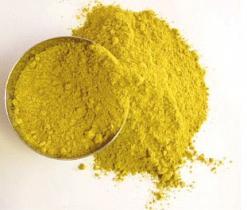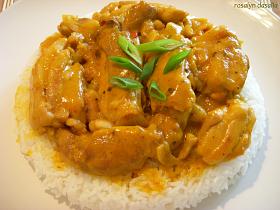Anti-Aging: Eat delicious curries, reduce cancer-risk
You may have already known from my past newsletters that cinnamon is one of the most powerful antioxidants that you may have been overlooking in this world where acai,
However, have you ever eaten curry? That yellow colour in curry is attributed to a spice called Turmeric, and it is one of the most powerful antioxidants you can consume with amazing health benefits.
Turmeric has been used in India for thousands of years as a dye, as a spice for dishes, and also in traditional Indian Ayurvedic medicine. Turmeric has some of the world’s most powerful fat-burning and healing qualities of any food or spice. It is a potent anti-oxidant, anti-inflammatory, and anti-bacterial substance.
What is turmeric?
Turmeric grows as a shrub in India and tropical parts of Asia. The roots are ground up to make turmeric. Its active ingredient is a substance called curcumin and it is bright yellow. This bright yellow spice has medicinal properties as well as adding its pungent color and taste to many delicious dishes.
Ayurvedic medicine has used this spice as a whole body cleanser, an aid for digestion, and in treatments for fevers, infections, liver and gall bladder problems and arthritis. It may even help to burn fat, and is also very effective as a preventative for heart disease, and Alzheimer’s.
The rich stores of antioxidants are very effective against the free radicals which contribute to premature aging, disease and cancer. Many natural practitioners actually recommend turmeric when a potent antioxidant is needed.
Anti-Aging
Turmeric’s anti-inflammatory properties have been shown in studies to promote neurological health. In the past, other anti-inflammatory agents (such as pharmaceuticals) have proven beneficial for this purpose as well, although their use has been limited due to their harmful effects on other areas of the body including the liver, kidney, and stomach. Tumeric has not displayed these side effects and could prove a valuable alternative to other anti-inflammatory agents.
A digestion aid and fat-burning compound
Turmeric helps to digest fats by stimulating the flow of bile in the gall bladder and therefore is very effective as a digestive aid and fat-burning compound. Studies also show it is highly effective at reducing the inflammation from Irritable Bowel Syndrome, ulcerative colitis, and Crohn’s disease.
For the heart, it contains strong anti-platelet substances which help prevent the blood from clotting too easily, and so is very effective against heart attacks and strokes. In addition, homocysteine, a chemical component in the body, which is one of the primary predictors of heart attacks, is significantly lowered in the presence of curcumin.
The curcumin in turmeric also has been shown to lower and reduce the oxidation of plaque on the artery walls.
As an anti-inflammatory it has been used effectively for a treatment for all types of osteoarthritis, rheumatoid arthritis, and for joint pain.
Turmeric and cancer-risk reduction
Turmeric is a powerful weapon against cancer cells as well. Studies show that this super spice can actually prevent cancer tumours from growing and in those who already have cancer, turmeric slows the growth and spread of cancer. In a research study done with mice injected with cancer cells, the curcumin in turmeric was proven to be more than twice as effective as the cancer drug paclitaxel (Taxol).
The curcumin in turmeric is also highly effective when combined with the anti-oxidant quercetin (found in red onions, apples and cherries) against pre-cancerous polyps in the colon. Studies show that polyps were reduced by 60% and the average size of existing polyps were reduced by 50%.
Turmeric and Alzheimer's disease
One of the most exciting new studies has shown turmeric’s value against Alzheimer’s. Studies of the Indian population who have a high intake of turmeric in their curry dishes show a very low incidence of Alzheimer’s and dementia in the elderly.
Alzheimer’s victims have a buildup of a certain type of plaque in the brain and turmeric is highly effective at breaking down this plaque and protecting brain health.
Ways to get turmeric into your diet:
One way to get high concentrations of curcumin is to use the spice turmeric in some of your cooking and recipes.
Curry contains turmeric, but is usually a combination of several spices and you may not get as much turmeric as you would using pure turmeric. That's not to say there aren't benefits to curry too, since it is a blend of several spices.
Try to get creative and test using turmeric and/or curry on various foods so you can benefit as much as possible from this potent super-spice...
Turmeric is very yellow and can stain so be careful when using it. This spice doesn’t have to be used just for curries. It is delicious on sautéed apples, or steamed cauliflower, green beans and onions, or any of your favourite veggies.
Try it with raw cruciferous vegetables like cauliflower or broccoli, or with celery, sweet pepper, jicama or radishes. Turmeric is also a great spice to complement recipes that feature lentils. Give salad dressings an orange-yellow hue and a little extra flavour by adding some turmeric powder to them.
Once you start using turmeric on a regular basis, it's fun to find new ways to use it in healthy recipes. My favourite way to use it is to add a healthy dose of it to egg salad. It adds a great flavour, and gives the egg salad a delicious rich yellow hue.
Internet site references:
http://www.truthaboutabs.com/turmeric-curcumin-health-benefits.html
Comments
There are 0 comments on this post















